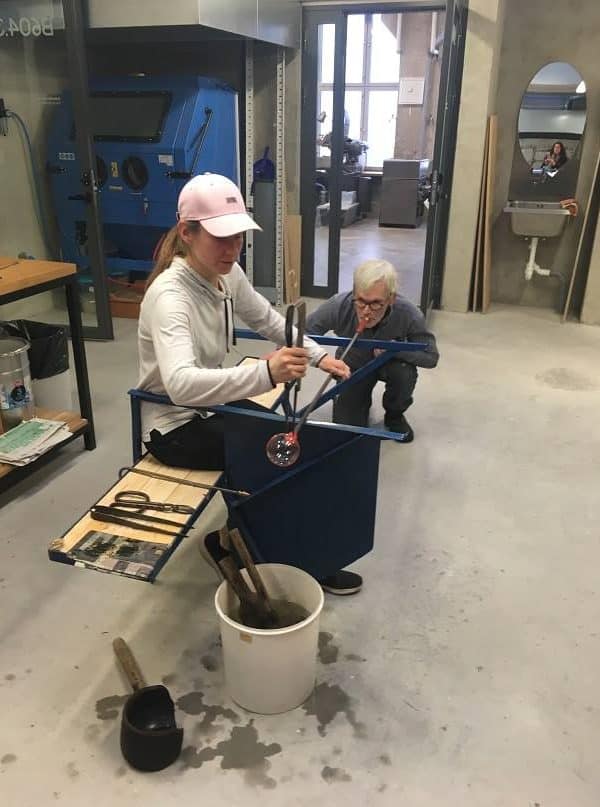
Furnace, kilns and sandblasting area
We have various workshops:
cold-processing workshop, where glass is ground, cut, polished and drilled;
moulding workshop, where models and moulds are made to produce glass objects using melting techniques;
engraving workshop, where engraving with copper and diamond wheels is taught;
glass painting workshop for glass painting techniques, silk screening, and production of stained glass details;
furnace room, where the kilns and a glass-blowing furnace and heatproof materials are located;
sandblasting equipment.
Glass blowing, hot modelling and casting take place periodically. Theoretical lectures often take place in general lecture halls, as well as in the computer class. The department has its own specialized library. To execute works in hot processing techniques, we also use the Olustvere Glass Workshop in Viljandi County (Olustvere School of Service and Rural Economics). Many of our graduates’ studios are open to the students for executing projects.
TOOLS AND EQUIPMENT
- Glass grinding and cutting benches with various wheels
- Diamond saw for cutting glass
- Polishing wheel
- Drill
- Sandblaster
- Engraving lathes with copper and diamond wheels
- Manual engraving machines
- Ball mill for grinding glass into powder
- Glass-fusing kilns (3) for working in various fusing techniques at temperatures up to 860 °C
- Glassblowing furnace
- Annealing furnace for the initial cooling of blown and cast glass products
- Flame torch for use in hot processes
- Blowpipes, scissors, ladles, tables for hot processing
- Glassblowing benches
- Soldering irons for making stained glass
- Computers (2), printer and scanner. (A computer class with modern equipment is located in the design faculty and is available to all the students)
The use of the tools and equipment is free when used in the course of studies and for executing specialized projects. On specific cases and agreements, students pay for the materials based on their acquisition cost; also when independent subcontracting work is executed outside the Academy.
Since the person using the aforementioned machinery and equipment must know how to operate it and strictly follow the safety requirements, it is assumed that instructions for use are provided. Even after instructions are given, a master or a faculty member must still be present when executing various processes. However, one of the goals is to learn how to use the equipment and machinery independently.

